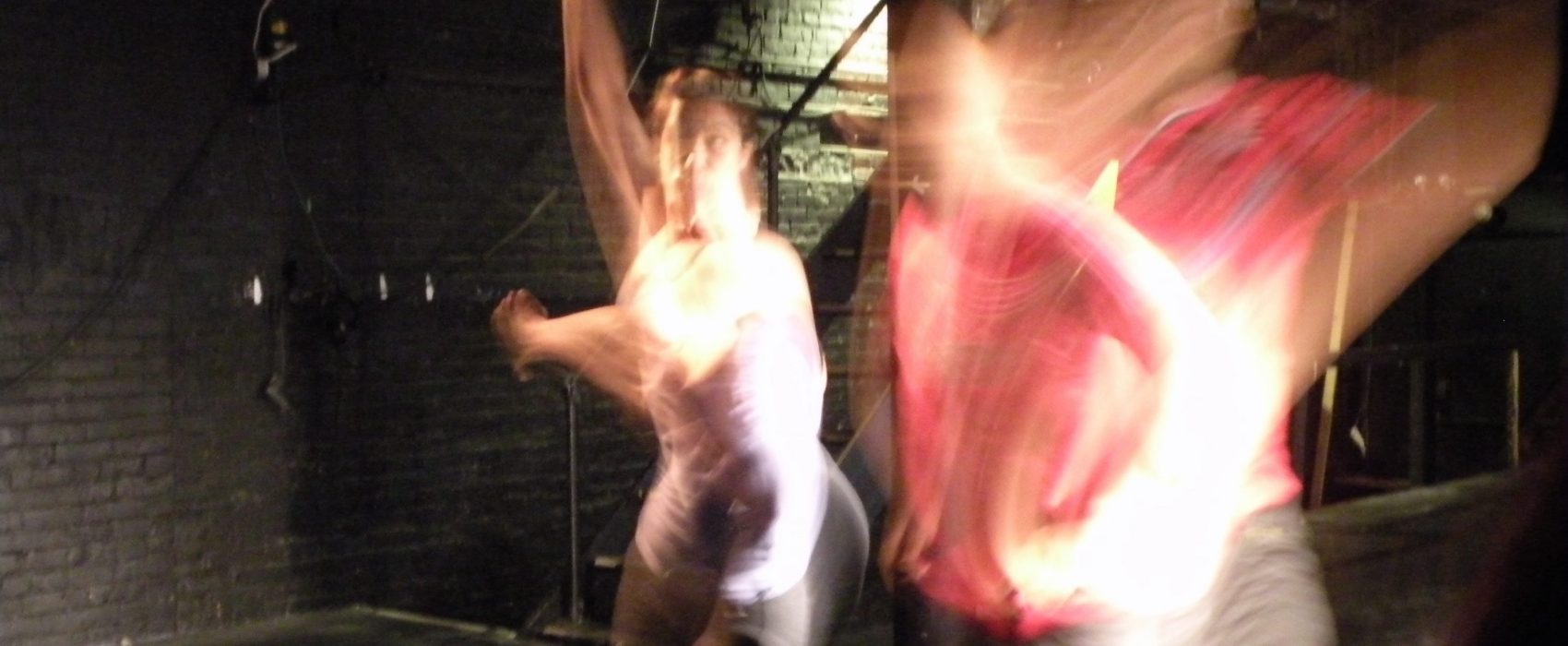
Image: Anita Majumdar in a choreographic session for S2BD (Brian Quirt)
Dance and Dramaturgy
By Brian Quirt
Dramaturgy is devoted to three tasks: the ideas which underlie a given piece of performance; the means by which those ideas are communicated – text, structure, image, movement and so on; and the process established to explore, create and refine the work.
In the theatre world the dramaturg is still a rather shadowy figure, but one whose role is increasingly accepted and sought after. Lack of money often makes it impossible for a project to have a full-time dramaturg, and many dramaturgical tasks are taken on by the director. In fact, someone always plays the role of the dramaturg. It might be a friend, lover or colleague who is sufficiently trusted and articulate to be given a first look at a new script and offer informal feedback. It might be the director of a play reading, or the actors, or a family member who says “I got that they were at a gas station, but the stuff about Nixon and Lester B. Pearson confused me.”
Dramaturgy clearly occurs in the dance world as well. Dancers and choreographers need to show their work to others and use their responses to assess and further shape their work. What a dramaturg can offer, as a separate position within the creative team, is a person whose energy is completely committed to how the performance will function in front of an audience.
Let me be more specific. It is my responsibility to uncover the initial impulse which inspired a given work. From that blossoms a series of ideas regarding content and performance style. I ask a lot of questions (every dramaturg does, it’s almost a joke how obsessive we are with questioning). What are you trying to say; or what feeling inspired the piece as a whole; what is it about this music that wants to make you move to it; why do you believe it is a quintet; are there any words associated with what you see; what do you want the audience to experience? In a text-based play, I eventually have a script which poses another series of questions: why does this person do this at this point; tell me again what happens in this part of the story; what are you trying to say about Pearson and Nixon; why are they important to you? In a dance work, I respond to images.
With as clear an impression of the ideas as possible, my job is to then hold the creator (writer, choreographer, dancer, director) to those ideas. I try to bring every element, every decision back to the communication of the ideas which inspired the work in the first place. If, as often happens, the core ideas change as the piece develops, I expose that fact so that we all know that there has been a subtle (or not so subtle) shift in the substance of what is being communicated. And then we work toward expressing that new set of ideas.
Performance exists to communicate something to an audience. With a choreographer I observe rehearsals and run-thoughs and articulate what I see. That is, of course, informed by the previous round of inquiry. I focus on the gap between what you want to say and what is being said. The result is a detailed, supportive and aggressive challenging of the work-in-progress. I have to dance the line between wanting too much explained and leaving the audience in the dark. Form, image, pacing, staging, text, music and expression are all analysed to ensure that the communication of the agreed upon ideas, in the agreed-upon form, is as clear and as theatrically effective as possible. I also believe that it is the dramaturg’s role to insist upon the most challenging expression of those ideas. I believe the audience must work hard when it watches and my job is to ensure that their hard work is rewarded by intelligent, moving and articulate ideas and images.
I prefer to enter the process as soon as possible so that I can be a part of its creative evolution. That’s not essential, of course. With Conrad Alexandrowicz’s This is a Dance, I began work after it had been produced.
Conrad wasn’t happy with some elements, so I questioned what he was exploring and helped him identify moments in the text and in his dancing which did not contribute to the exploration. We worked on our feet to refine and edit movement.
With Karen Kaeja’s One Tree Hill, I joined the process after initial movement improvisations had been completed. Karen asked me to conduct a series of writing workshops with the dancers in order to explore, through words, the ensemble’s feelings about childhood. I watched runs and served as a mirror, explaining how certain images struck me, asking how they related to her overall vision of the piece, and using my theatrical background to address the structure and pacing of the work.
I have enormously enjoyed working with choreographers since it generally allows me to not worry about text and narrative and bring my skills to bear exclusively on ideas and images. I adapted Jane Urquhart’s novel The Whirlpool to the stage, with Julia Sasso choreographing it. In that case I established the central ideas and asked Julia to explore them physically. I directed actors and focused on story and text, while Julia worked on narrative imagery. In effect, we became each other’s dramaturg. She commented on the emotional and physical communication of the scripted scenes; I addressed the content and theatricality of her choreography. It was an exciting and wonderful collaboration, and one which to me only reinforces the vital role of the dramaturg in any performance.
This article was first published in The Dance Current magazine Volume 1, Issue 2: June 1998.